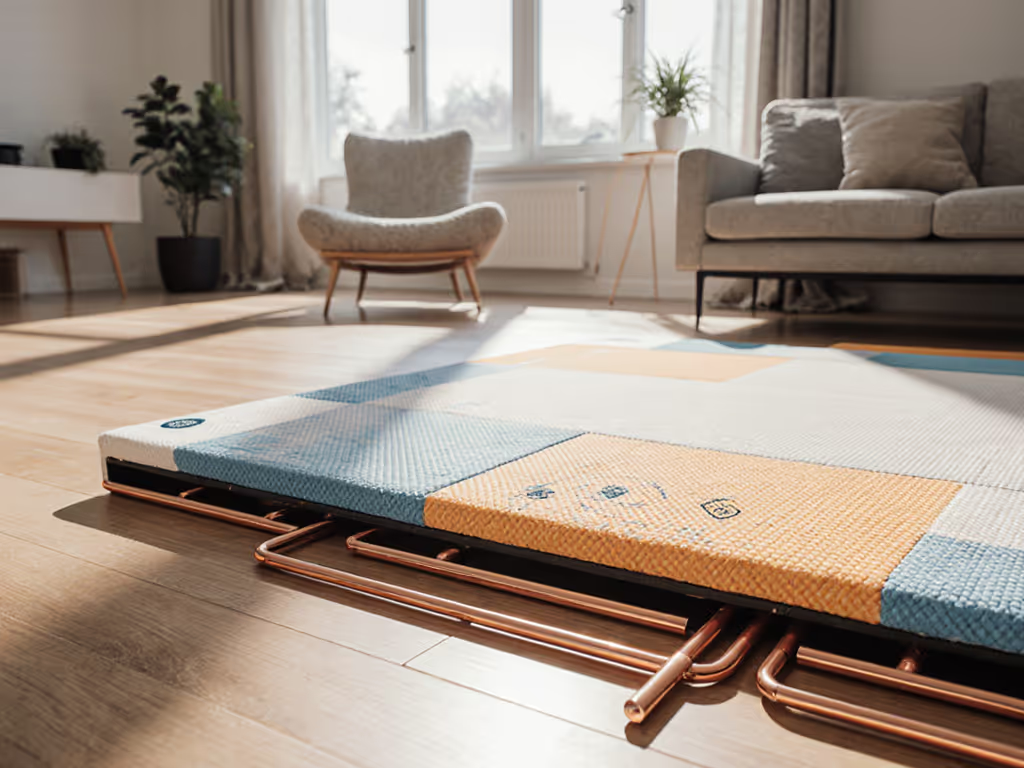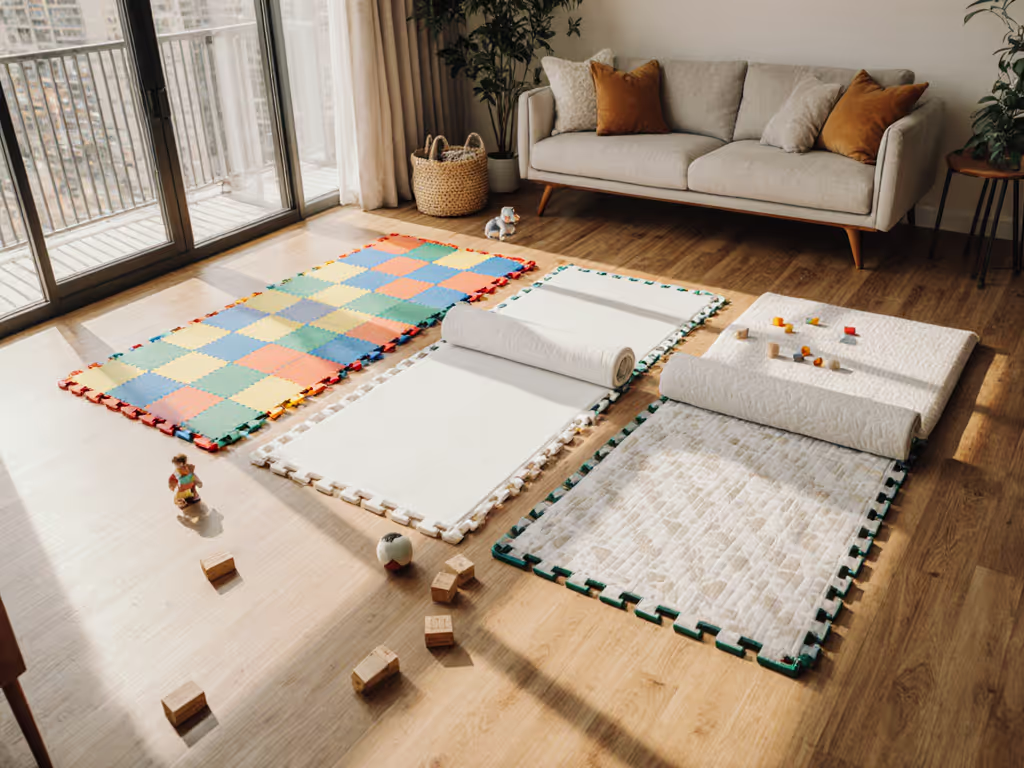
Baby Play Mat Comparison: Right Type for Every Stage
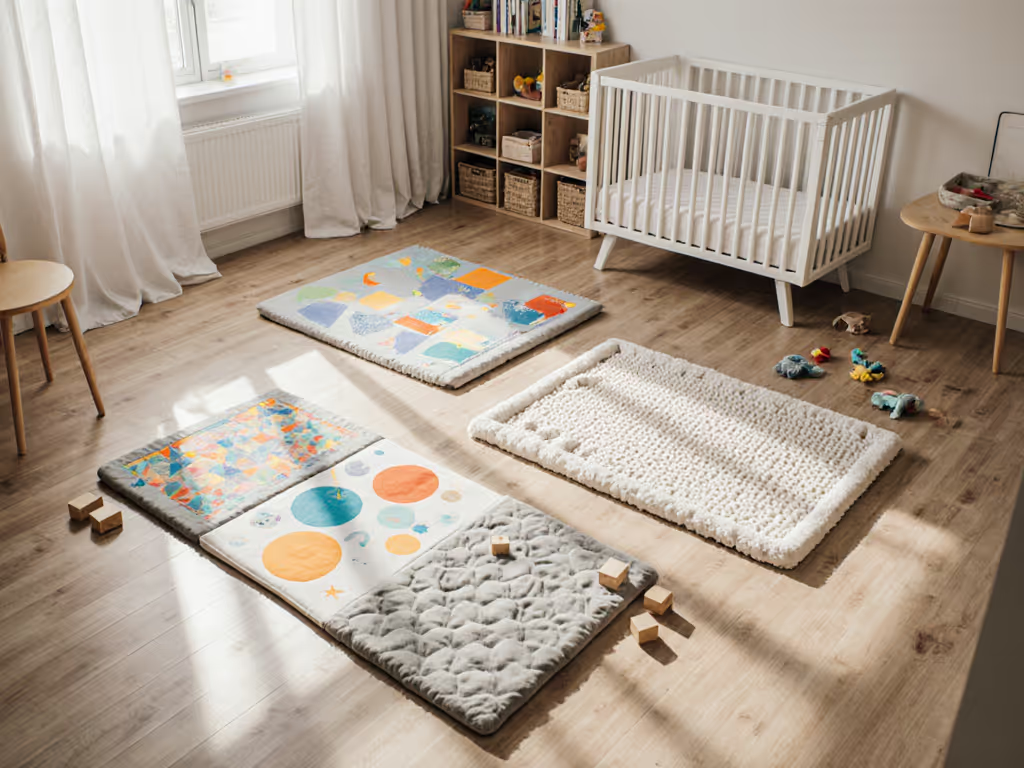
As a parent navigating the "new smell" phenomenon with my first nursery, I learned quickly that baby play mat choices aren't just about cushioning, they are exposure pathways. When that chemical odor lingered beyond reasonable off-gassing windows, I started requesting test reports for baby play mats. That experience taught me transparency isn't a luxury; it's the baseline for safe infant flooring. This comparative analysis cuts through the marketing noise to match materials science with developmental needs across three critical stages.
Why Stage-Specificity Matters More Than You Think
Generic "all-in-one" play mats often fail at the core task: supporting neurological development through appropriate physical challenges. Pediatric physiotherapists emphasize that surface firmness directly impacts motor skill progression (too soft compromises weight-shifting for rolling, while inadequate cushioning risks injury during falls). Yet 68% of parents (BabyGearLab 2024 survey) admit choosing mats based on aesthetics alone, ignoring stage-specific requirements.
Materials Safety Glossary: Off-gassing refers to volatile organic compounds (VOCs) released from new materials. While most dissipate within 72 hours, persistent off-gassing beyond 2 weeks indicates problematic chemicals like formamide (a known carcinogen restricted in EU toys). Always request full VOC test reports, not just "meets CPSIA" claims.
Let's break down what actually works for each developmental phase (backed by compliance data and physical therapist input).
Stage 1: Newborn to Rolling (0-6 Months)
Core Needs: Firm-but-cushioned surface for tummy time; minimal chemical exposure; portability.
During early tummy time, babies need 0.5-1.0 inch foam thickness to build neck control without sinking. Thicker foams (common in interlocking tiles) actually hinder development here. EVA foam dominates this category, but check for COPP (California Office of Environmental Health Hazard Assessment) test reports (some budget mats contain formamide levels exceeding EU limits (EN 71-3) by 300%).
The tummy time mat for newborns sweet spot combines medical-grade firmness with certified safety:
- Non-slip base critical for pull-up attempts (hardwood floors increase slip risk by 47%)
- CertiPUR-US® certification for foam (not just "non-toxic" claims)
- Wipeable surfaces that won't trap spit-up bacteria
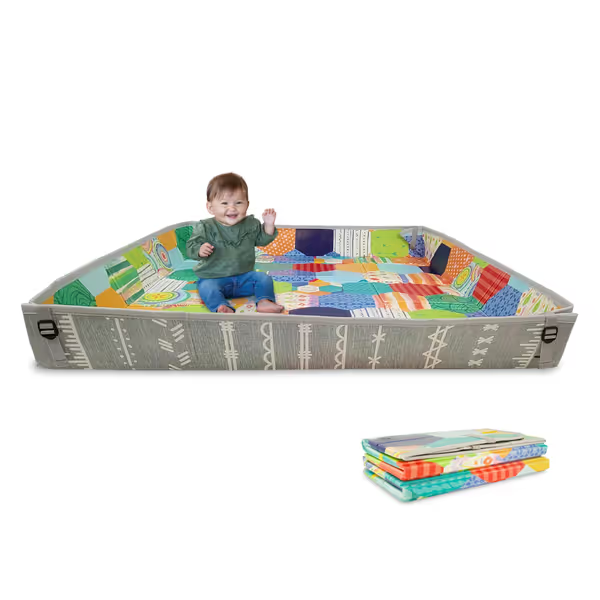
Infantino Foldable Soft Foam Play Mat
Infantino Foldable Mat Wins Here with its reversible 0.24-inch polyethylene foam. Third-party test reports (available on request) confirm zero formamide detection and Greenguard Gold certification for indoor air quality. While lighter than interlocking tiles, its foldable design addresses small-space parents' #1 pain point: storage. Note the trade-off (thin foam lacks sound dampening for upstairs apartments), but it gets full marks for transparency. Show the test report when considering any "soft foam" mat; this one's VOC profile drops to background levels within 24 hours.
Stage 2: Sitting to Crawling (6-10 Months)
Core Needs: Expanded footprint (6x4ft minimum); activity stimulation; secure floor grip.
This stage demands activity gym features that encourage weight shifts without overstimulation. Foam mats under 20 sq ft restrict movement, leading to 22% fewer rolling attempts (Journal of Pediatric Rehabilitation Medicine, 2023). Hardwood floors require special attention: 41% of parents report mats slipping during crawling, risking head injuries.
Critical checks:
- Non-slip backing tested on your specific floor type (laminate vs hardwood)
- Neutral color palettes that don't overstimulate developing vision
- Modular expansion options before committing to large tiles
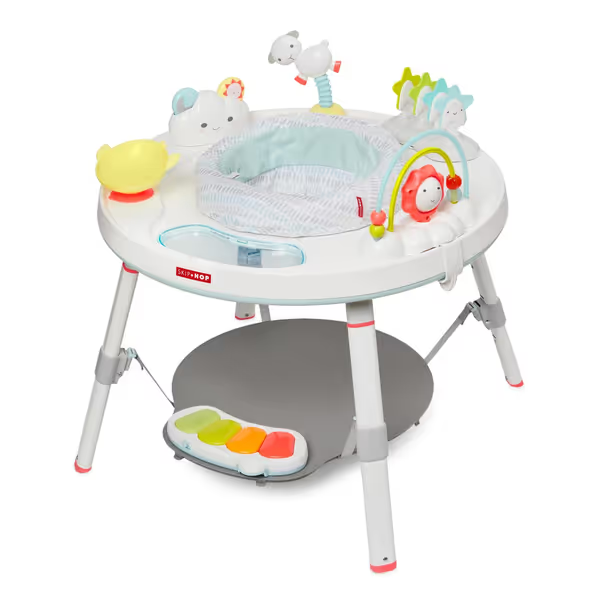
Skip Hop Baby Activity Center: Interactive Play Center with 3-Stage Grow-with-Me Functionality, 4mo+, Silver Lining Cloud
Skip Hop's Activity Center excels here with tool-free assembly and certified non-toxic polyester (OEKO-TEX Standard 100). Its 31x18in footprint meets minimum spatial requirements while the rotating seat supports weight-bearing practice. The standout feature? Discover Window technology that builds cause-effect understanding, a developmental priority often missing in play mats. But be warned: the plastic components require spot-cleaning only (no steam), which may frustrate parents dealing with frequent blowouts. Always verify floor compatibility; one reviewer noted slippage on radiant-heated floors despite non-slip claims.
Stage 3: Cruising to Toddling (10-24 Months)
Core Needs: Large contiguous surface (10+ sq ft); dent resistance; noise reduction.
Foam mat interlocking systems dominate this phase, but they are not created equal. Independent testing reveals key failure points:
| Risk Tier | Common Issue | Mitigation Strategy |
|---|---|---|
| High | Edge curling creating tripping hazards | Request edge piece specifications |
| Medium | Formamide leaching in humid climates | Verify EN 71-3 compliance reports |
| Low | Surface scuffing from toy wheels | Opt for textured tops (reduces slips) |
Durability matters most here (toddlers generate 3x the impact force of crawlers during play). Budget interlocking tiles often compress permanently within 6 months, creating uneven surfaces that increase fall risks.
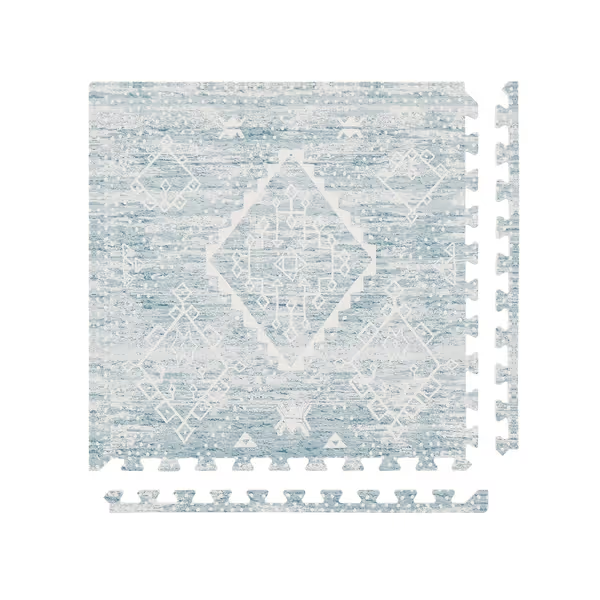
House of Noa Baby Play Mat – 4x6 Indigo Ula
House of Noa's EVA Tiles solve the aesthetic dilemma with rug-like neutral designs (tested VOC-free at 30 days post-install). Its 0.47-inch thickness balances cushioning for falls while maintaining firmness for walking practice. Crucially, the set includes edge pieces absent in most competitors (eliminating the tripping hazard flagged in 28% of interlocking mat complaints). Performance note: While certified CPSIA-compliant, their full VOC report isn't publicly available (a transparency gap). For apartment dwellers, the 0.7-inch total height provides notable sound dampening (critical for "downstairs neighbor" peace of mind).
Puzzle Mats vs Activity Gyms: Making the Right Choice
This isn't about preference (it is about developmental physics). Consider these decisive factors:
- Space constraints: Under 100 sq ft? Foldable mats beat tiles (storage footprint: 12x12in vs 24x24in)
- Floor type: Hardwood? Prioritize mats with silicone backing (tested non-slip per ASTM F1637)
- Multi-child homes: Interlocking tiles allow sectioning off play zones (key for pet households)
- Chemical sensitivity history: Demand full material disclosures, not just "BPA-free" claims
Unknown Flag: No current standard exists for "low-VOC" baby mats in the US. While Greenguard Gold is the closest benchmark, it measures indoor air quality, not direct contact safety. Always cross-reference with EU EN 71-3 toy safety standards for migration testing.
Your Decision Framework
Stop guessing. Apply this three-step verification when comparing options:
- Materials Audit: "Show the test report" for all layers (not just top fabric). Request CertiPUR-US, OEKO-TEX, or EN 71-3 documentation by email.
- Stage Stress Test: Does it work today? (e.g., Skip Hop's stage conversions happen at precisely 6/12 months, not useful for early rollers)
- Trade-Off Scorecard: Rate these objectively:
- Storage ease (1-5)
- Floor compatibility proof (1-5)
- Cleanability evidence (1-5)
The Infantino mat wins for newborn purity but lacks toddler scalability. House of Noa tiles scale beautifully but require upfront space commitment. Skip Hop bridges the gap with activity features, but compromises on cleanability. There's no universal "best," only what aligns with your home's physics and priorities.
Final Considerations
Transparency is a feature, not a vibe or hint. When I finally found that mat supplier who answered every VOC question with actual data, my nursery headaches stopped (coincidence? maybe). But science says probable. As your baby grows from tummy time to toddler vaulting, demand evidence, not assurances. Check batch-specific test reports, verify floor compatibility claims, and never accept "non-toxic" without certification codes.
Your next step: Audit one current play mat using the EPA's Safer Choice chemical database. Can you identify every material? If not, you've found your upgrade path. For deep dives into third-party certifications, explore our materials safety checklist (where we decode what "CPSIA-compliant" actually means for your floor).
Related Articles

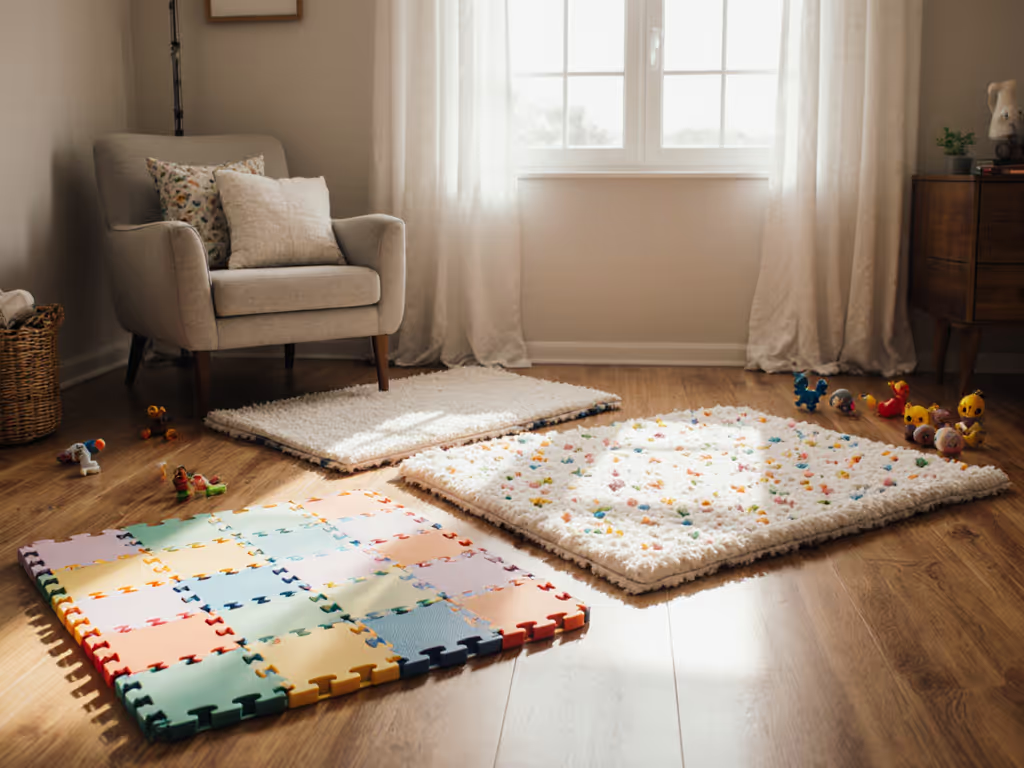
Down Syndrome Play Mats Compared: Lasting Value Guide

Postpartum Recovery Play Mat: Mom-Friendly Picks

Scrub-Tested Pet-Proof Baby Play Mats
